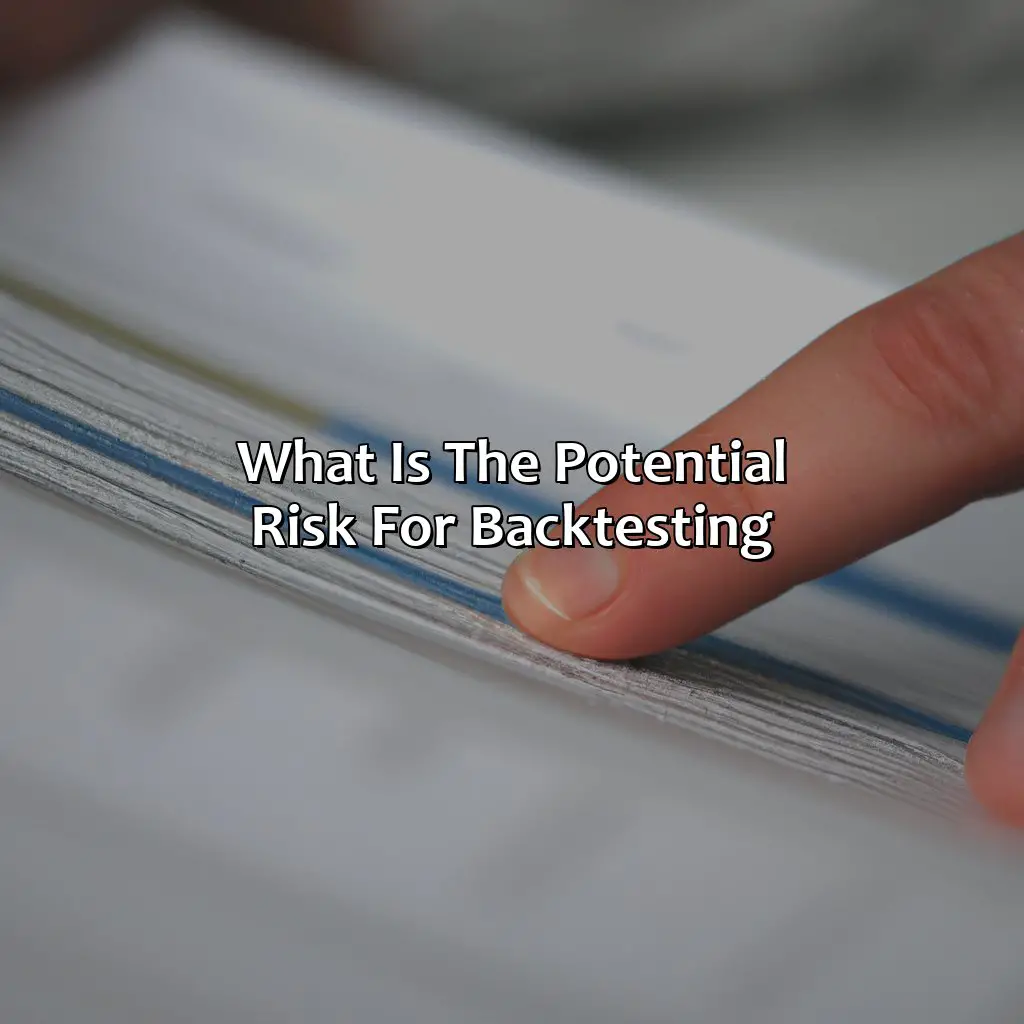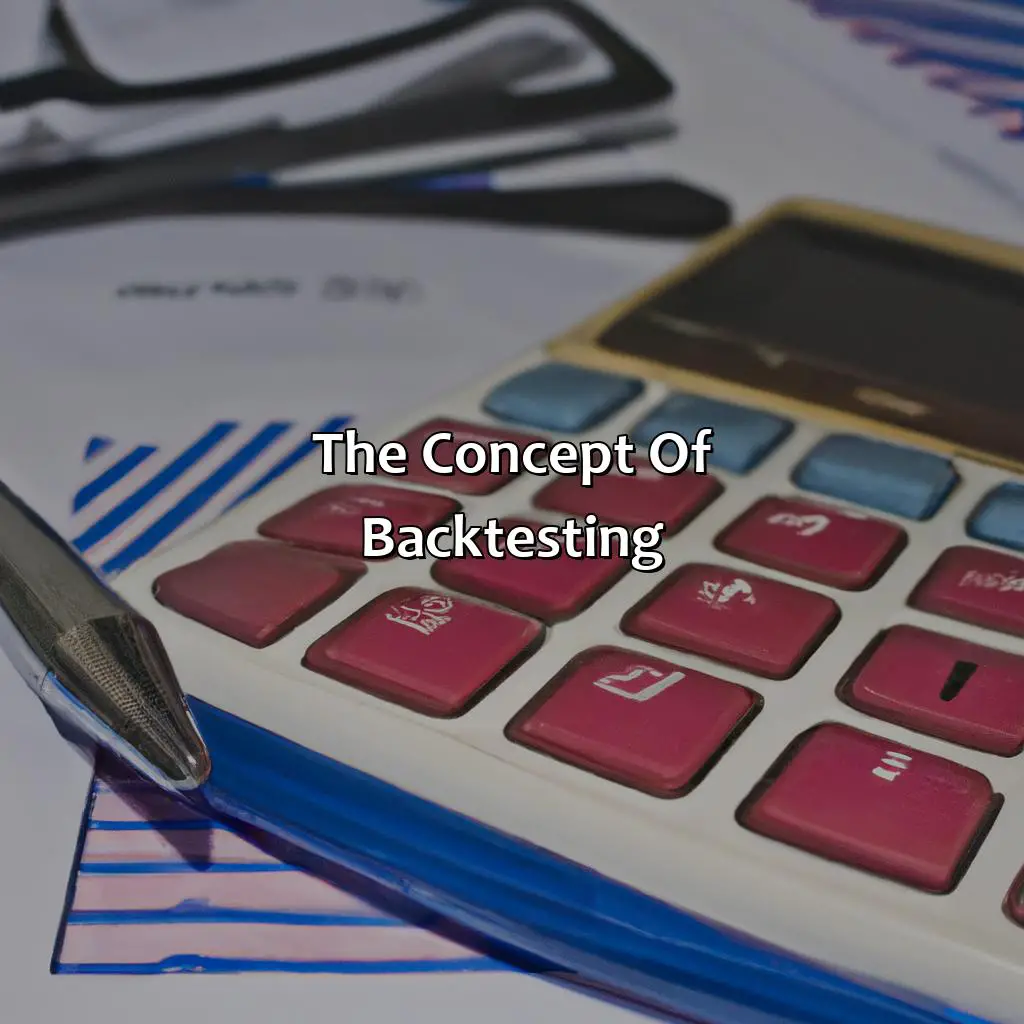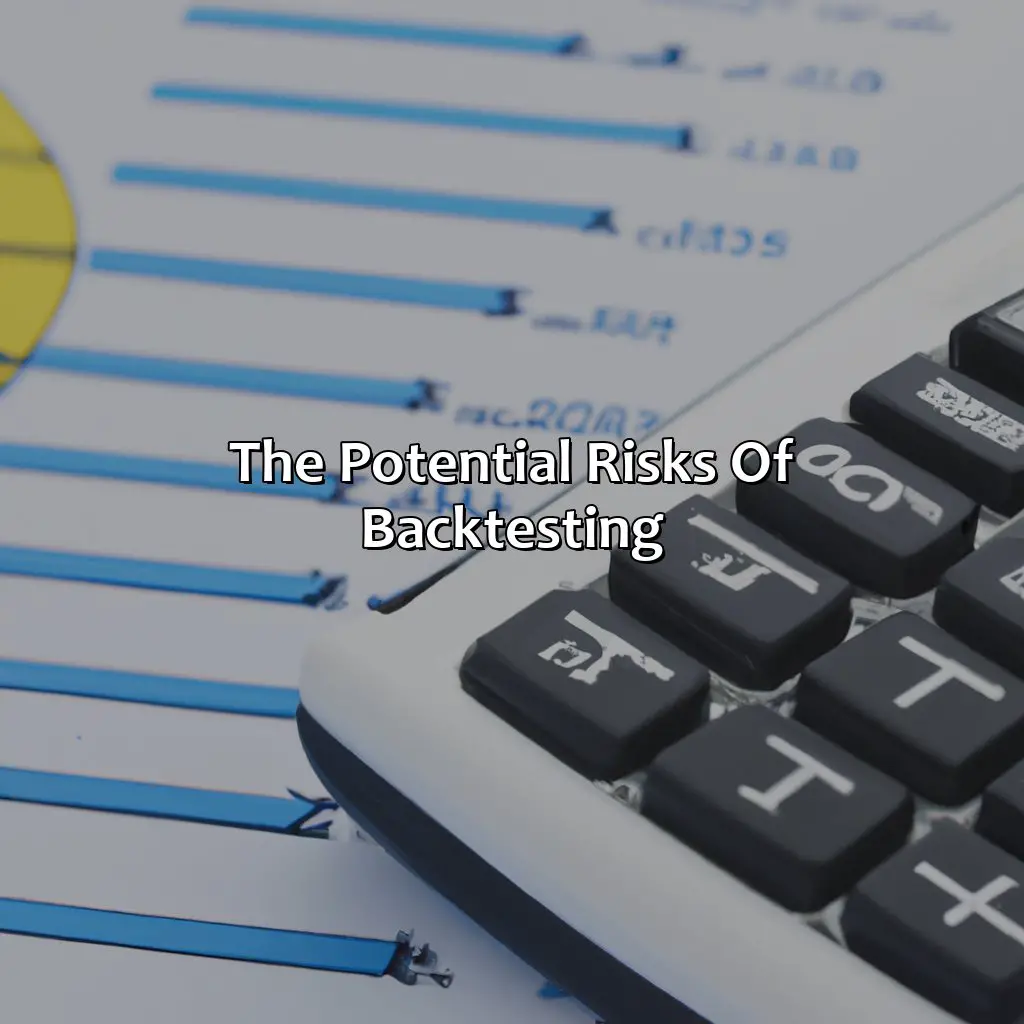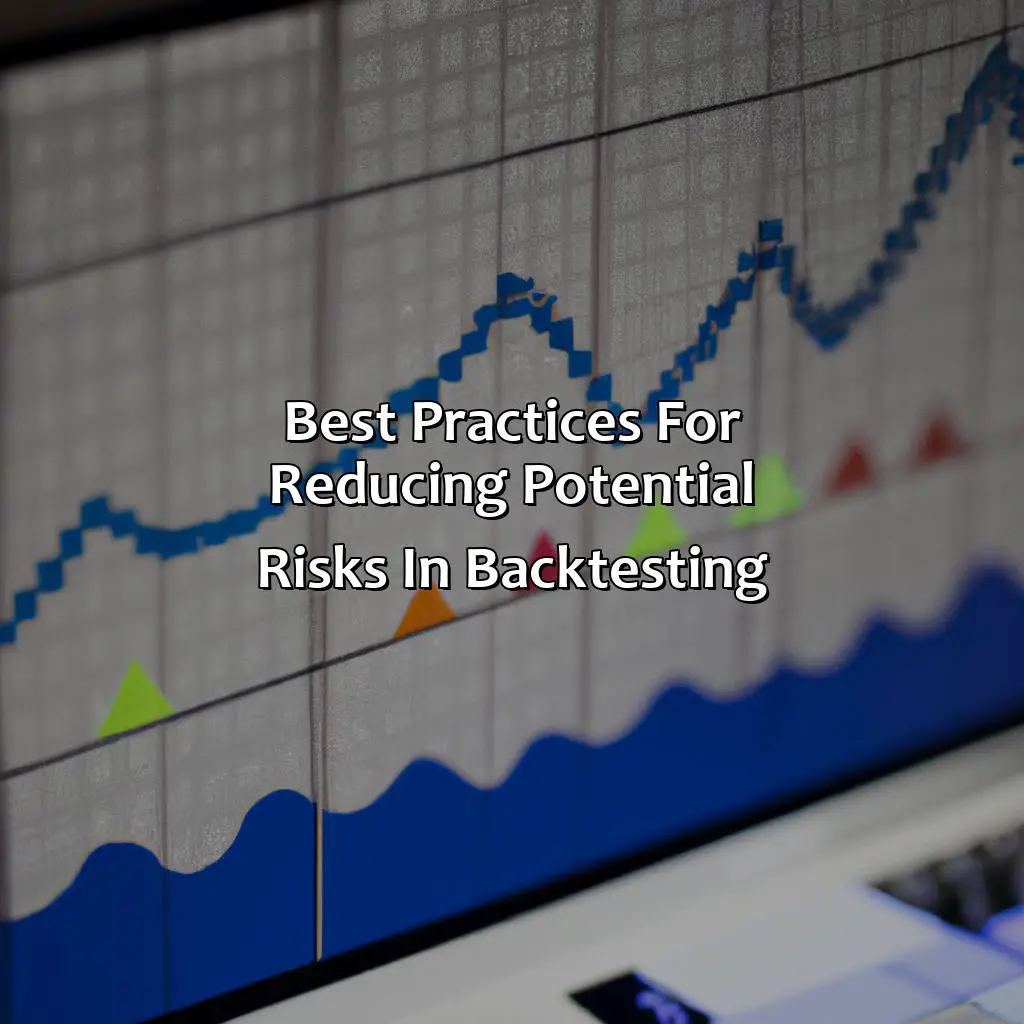
Key Takeaways:
- Backtesting involves testing a trading strategy on historical data to evaluate its performance and potential profitability.
- The potential risks of backtesting include limitations of historical data, biases and errors in data collection, over-optimization or curve fitting, insufficient testing periods, and impact of market conditions on backtesting results.
- To reduce potential risks in backtesting, best practices include validation and verification of data, diversifying data sources, staying cautious with optimizations, extending testing periods, and incorporating a wide range of market conditions in testing.
The Concept of Backtesting

Photo Credits: forexbrokerreport.com by Bobby Hill
Backtesting is a concept used to test a trading strategy on historical data to evaluate its potential profitability. It involves simulating trades using past market conditions to analyze the effectiveness of a strategy. Backtesting helps identify strengths and weaknesses of a strategy and allows for adjustments to be made before implementing it in the live market.
A key potential risk of backtesting is overfitting, where a strategy may perform well in past data but not in future markets due to market shifts or changes in conditions. It is important to use robust and diverse data sets and avoid data snooping to minimize this risk. For best results, backtesting should be done using multiple scenarios and rigorous testing measures.
Pro tip: Always test and validate the effectiveness of a strategy using multiple backtesting scenarios before implementing it in live trading.
The Potential Risks of Backtesting

Photo Credits: forexbrokerreport.com by Jose Thompson
To get a grasp of the risks of backtesting, think about the limitations of historic data. These could include:
- Errors in collecting data
- Over-optimizing it or fitting curves
- Testing for too short a period
- Market conditions influencing the results
Let’s examine each of these areas carefully. This way, you can recognize the risks that could make your backtesting results invalid. Taking action to reduce these threats is key.
Limitations of Historical Data
The data used in backtesting is primarily historical, and there are various limitations that come along with it. Historical data can be subjected to biases and errors, making it less reliable for predicting future outcomes. The limited availability of data for some instruments could also hinder the accuracy of predictions.
Additionally, historical data may not account for all influencing factors on markets or assets being tested, which could lead to over-optimization or curve-fitting. Besides this, misrepresentative research findings and insufficient testing periods could result from relying solely on historical data.
Unique details indicate that the outcome of a backtested strategy created using past results may not hold in future trading conditions due to market changes. Market intervention of governments such as central banks could alter market dynamics and invalidate a backtested strategy’s earlier projections.
True history reveals that the 2008 financial crisis exemplifies the limitations of historical data in exposing risks adequately. Before 2008, many U.S. residential mortgage-backed securities were rated AAA based on their historical performance, but defaults skyrocketed following the global housing collapse that led to massive losses for investors who relied on historical rating metrics without considering other economic factors in their investment strategies.
Even with data collection, biases and errors can sneak in like your ex who ‘just happened to be in the neighborhood’.
Biases and Errors in Data Collection
The precision of backtesting is influenced by biases and errors in data collection. Several factors can introduce bias, including irregularities in sampling and information selection. These particulars may ultimately misrepresent the population, which will lead to incorrect conclusions. Errors in collecting data are also a potential problem for backtesting since they make an impact on the reliability of test results.
It’s imperative to validate and verify data when minimizing potential risks while designing a backtesting strategy. Cross-referencing multiple sources that complement each other might aid in eliminating outliers by introducing several representative datasets. This technique would imply a more reliable testing outcome that better reflects market conditions.
While performing a backtest, staying cautious with optimizations is also essential. Some businesses opt for over-optimization or curve-fitting alternatives to obtain a significantly superior result than the actual outcome, leading to flawed reviews. A diverse array of trading strategies should be implemented to produce performance results that aren’t reliant on one particular strategy.
Extending testing periods is another pivotal step towards addressing biases and errors generated during data collection. Moreover, Incorporating a vast range of market conditions into analysis can assist in creating an extensive picture of portfolio performance under different situations. Ultimately one needs to consider carefully before using backtesting as their primary method for analyzing investment strategies because all types of risks cannot be identified realistically through such procedures.
In summary, reducing the biases and errors associated with data collections proves vital when it comes to designing effective backtest strategies effectively. By incorporating multiple data sources, decoupling strategy testing methods from optimization techniques, prolonging testing periods duration; one can undoubtedly make better decisions concerning optimal trading techniques by accurately representing market conditions correctly without relying on past stock behaviors alone. Additionally, over-optimization in backtesting is like trying to fit a square model into a round market, it never ends well.
Over-Optimization or Curve Fitting
Over-optimization or curve-fitting is a common issue in backtesting quantitative trading strategies. It occurs when the testing period and conditions are fine-tuned to fit a specific data set, leading to the creation of a model that performs exceptionally well during the testing period. However, when tested with new data, the model often fails to perform well due to overfitting.
This phenomenon is also known as data snooping or p-hacking, where traders may mine data for patterns until they find statistical significance. It may lead to unrealistic expectations and a high probability of model error even when extrapolation is considered.
To prevent this issue, traders can use cross-validation techniques such as out-of-sample testing or splitting their data into multiple subsamples that actively avoid overfitting. Furthermore, using smaller samples of historical data instead of overfitting our models would also reduce this risk.
Insufficient testing periods are like cutting corners in a simulation analysis, except instead of tripping over the rug, you stumble over inaccurate parameter estimations and biased model selections.
Insufficient Testing Period
Testing duration inadequacy in simulation analysis can lead to an inaccurate backtesting outcome. Without adequate data, the model is unable to generalize and provide accurate predictions. Parameter estimation, model selection, cross-validation, regularization, train-test split, time period selection and sample size play a crucial role in determining sufficient testing periods.
In Backtesting, insufficient data samples may lead to overfitting or underfitting which may result in inaccurate results affecting subsequent investment decisions and portfolio management. Regular calibration of algorithmic trading models could dissolve this issue but require rigorous parameter adjustment.
Interestingly, studies have shown that inadequate testing periods are one of the top reasons for below-average returns on account of unreliable simulation outcomes. (Source: https://www.investopedia.com/terms/b/backtesting.asp)
The impact of market conditions on backtesting results is like trying to predict the weather with a magic eight ball – sometimes accurate, often unreliable, and always subject to unexpected twists and turns.
Impact of Market Conditions on Backtesting Results
Backtesting results can be influenced by market conditions that exist during the testing period. The fluctuation in market dynamics can create a bias-variance tradeoff, leading to uncertainty in the backtesting results.
The impact of market conditions on backtesting results is mainly due to historical data limitations and the inability of the model to address structural breaks or changes in market behavior. Moreover, trading signals generated from backtesting under specific market conditions may not be effective under different scenarios.
To mitigate this risk, practitioners should incorporate outlier detection techniques, data preprocessing, and feature selection methods before model selection. Ensemble methods like decision trees, logistic regression, neural networks, and support vector machines can increase performance and reduce error rates.
To further reduce risks associated with market conditions on backtesting results, time-series analyses should include assessment of autocorrelation, heteroscedasticity, and cointegration. In addition, mean reversion and momentum trading strategies should be considered with appropriate portfolio optimization techniques such as value at risk and expected shortfall.
Pro Tip: Practitioners must validate their model by incorporating robustness checks like Monte Carlo simulation and out-of-sample testing to ensure that it captures dynamic market behavior across multiple scenarios.
Reduce the risk of backtesting by verifying and diversifying data, staying cautious with optimizations, extending testing periods, and incorporating a wide range of market conditions.
Best Practices for Reducing Potential Risks in Backtesting

Photo Credits: forexbrokerreport.com by Stephen Campbell
Minimizing risks connected to backtesting has some best practices. To get reliable data and better results, validate and verify the data first. Multiple data sources will increase accuracy. Caution is needed when optimizing, and testing periods should be longer to capture different market conditions. A wider range of market conditions provides a more realistic environment for backtesting.
Validation and Verification of Data
To ensure the accuracy and reliability of backtesting results, it is crucial to perform validation and verification of data. This process involves cross-checking the information with external sources and confirming its accuracy by evaluating its consistency with other data sets.
A table can be created to illustrate the steps involved in validating and verifying data, including assessing the quality of data sources, performing initial data checks, comparing against external data sets, and identifying potential errors or inconsistencies.
| Step | Description |
|---|---|
| Quality Assessment | Evaluate dataset source credibility. |
| Data Checks | Confirm relevancy with objectives & scrutinize for mistakes. |
| External Comparison | Contrast internal dataset vs external datasets to spot similarities. |
| Error Identification | Identify possible divergences or defects in processing chains. |
In addition to these measures, periodic checks should be conducted to ensure that the data remains relevant and reliable over time. By following these best practices, the risks associated with backtesting can be minimized.
Pro Tip: If possible, consider using third-party verification services to provide an objective assessment of your data’s accuracy and validity. Diversify your data sources like a polyamorous trader to minimize biases and increase the accuracy of your backtesting results.
Diversifying Data Sources
Expanding the idea of expanding data sources, to mitigate risks of backtesting, entails increasing the variety of information being used. New types of input can highlight potential issues and provide more accurate predictions. By diversifying data sources, traders can increase the quality and scope of insights gained from backtesting, thereby creating better trading opportunities while minimizing risk.
By incorporating alternative datasets derived from sources beyond market observations or financial records, the user gains varied perspectives that compliment traditional data sets in a more informed manner. Such unique inputs range from satellite imagery or social listening tools to weather forecasts and consumer purchasing trends. The added dimension to backtesting creates an even larger set of resources that derive information on market movements beyond just ones available through static means.
The use of multiple disparate sources may prove effective but care must be taken in selecting data-sets based on their accuracy, precision, and relevance. Prior validation against relevant past market conditions makes use of alternate people’s opinions (including third-party analytical opinions) to supplement current user knowledge with more precise perspective towards trading decisions.
One study investigated how diversification contributed to better trade outcome during a six-month testing period by using news reports as a separate dataset alongside aggregated RSS feed injections. A 10% increase in success rate was observed when combined over hedge funds using traditional forms while they were solely relying on old measures.
It’s important for traders to research relevant historical patterns that encompass diverse inputs so they understand which data sets are most beneficial supplements for their trading strategies between varying markets.
You can never be too cautious with optimizations in backtesting, unless you enjoy the thrill of curve fitting roulette.
Staying Cautious with Optimizations
To minimize potential risks in backtesting, staying cautious with optimizations is crucial. Over-optimization or curve-fitting occurs when strategies are excessively adjusted based on historical data. This can lead to poor results when applied to real-time trading scenarios.
Instead of relying heavily on the optimization process, traders should prioritize the development of robust strategies that can withstand a wide range of market conditions. By doing so, they can avoid the pitfalls associated with over-optimization and achieve more consistent results.
In addition to being cautious with the optimization process, diversifying data sources and extending testing periods can also help address potential risks in backtesting. By gathering data from multiple sources and testing over extended periods of time, traders can improve the accuracy and reliability of their backtesting results.
A study conducted by Robeco shows that while backtesting is a useful tool for evaluating trading strategies, it does not guarantee success in live trading situations. Therefore, it is crucial for traders to use a variety of testing methods, including live testing and paper trading, before implementing any strategy in real markets.
Extending testing periods may seem like a pain, but it’s better than being haunted by the ghosts of backtesting’s past mistakes.
Extending Testing Periods
Extending the testing period can be an effective way to reduce potential risks in backtesting. By increasing the duration of testing, it provides a larger sample size of data which can help improve the accuracy and validity of results. In addition, longer testing periods can help capture a wider range of market conditions, thereby reducing the impact of any inherent biases or errors that may exist.
Here’s a 4-step guide on how to effectively extend testing periods:
- Identify your desired testing period based on your trading strategy and goals
- Select historical data from various sources covering both bull and bear markets
- Incorporate different market conditions such as volatility, liquidity, and economic indicators into your testing
- Regularly monitor and adjust your testing period based on changes in market dynamics or other variables that may affect your results
By following these steps, you can increase the likelihood of producing reliable backtesting results while minimizing potential risks.
It is essential to note that extending the testing period alone cannot entirely mitigate all potential risks associated with backtesting, but it can undoubtedly minimize them. Therefore, it’s crucial to adopt other best practices such as validation and verification of data, diversifying data sources, staying cautious with optimizations, incorporating a wide range of market conditions in combination with extending trading periods for better accuracy.
Suppose you do not extend the trading periods while running backtesting risk outcomes. In that case, there is a chance that valuable information might get lost or missed out on opportunities’ fear for traders looking out for ways to improve their strategies’ effectiveness efficiently. By utilizing these strategies mentioned earlier and extending trading periods during backtesting, insights can be generated in traders’ current performance by minimizing all possible risks against losing capital investment interests or failing their trading strategies by getting maximum insight through long-term duration investigation offering detailed analysis report-based solutions.
When it comes to backtesting, a narrow focus on a single market condition is like trying to swim with one arm tied behind your back – it’s not going to end well.
Incorporating a Wide Range of Market Conditions
The wide range of market conditions play a vital role in backtesting. It is important to incorporate varied market trends and data points to create an accurate model. By including high volatility phases, bear markets, etc., the model can perform well even in unprecedented scenarios.
This not only ensures robustness but also provides insights into potential risks that may not have been visible before. The model can adapt better to sudden changes by incorporating different data sets with varying contexts.
Therefore, it is critical to use a diverse dataset when testing strategies and models. Thus, avoiding optimization-driven bias and increasing substantially the reliability of outcomes.
Many traders fall prey to over-optimization, focusing too much on single criteria and end up designing unrealistic strategies that do not work well during uncertainty or volatile conditions.
For instance, Back-testing showed high accuracy for gold prices a year ago in London due to China-U.S trade tensions but did not work during the current COVID-19 outbreak season because this epidemic had never been encountered before.
Five Facts About Potential Risks for Backtesting:
- ✅ Backtesting involves testing a trading strategy using historical data, which may not accurately reflect current market conditions. (Source: Investopedia)
- ✅ It is possible to overfit an algorithm to historical data, which can result in poor performance in the live market. (Source: QuantInsti)
- ✅ Backtesting cannot account for unexpected events, such as natural disasters or political turmoil, that can significantly impact market conditions. (Source: FXCM)
- ✅ Backtesting can give a false sense of confidence, leading traders to risk more than they should in the live market. (Source: Trading Technologies)
- ✅ Backtesting requires careful analysis and risk management to avoid potential losses in the live market. (Source: Investopedia)
FAQs about What Is The Potential Risk For Backtesting?
What is the potential risk for backtesting?
The potential risk for backtesting is that the results may not be applicable to future market conditions, if the assumptions used for the backtesting are incorrect.
How can incorrect assumptions lead to inaccurate results in backtesting?
If assumptions used for backtesting are incorrect, the results obtained in the backtesting would be unreliable, which will lead to inaccurate results.
What are some of the assumptions used in backtesting?
Some common assumptions for backtesting includes market liquidity, transaction costs, and market behavior.
Can backtesting guarantee future performance?
No, backtesting cannot guarantee future performance because the market changes constantly, so the test results may not be valid in the future market conditions.
What are some of the limitations of backtesting?
Some of the limitations of backtesting includes erroneous data, reliance on historical trends, and the inability to predict market behavior.
How can these limitations be overcome?
These limitations can be overcome by using a variety of testing methods, cross-validation of data, thorough analysis of market conditions, understanding of the limitations of backtesting, and the use of expert opinions when evaluating results.

